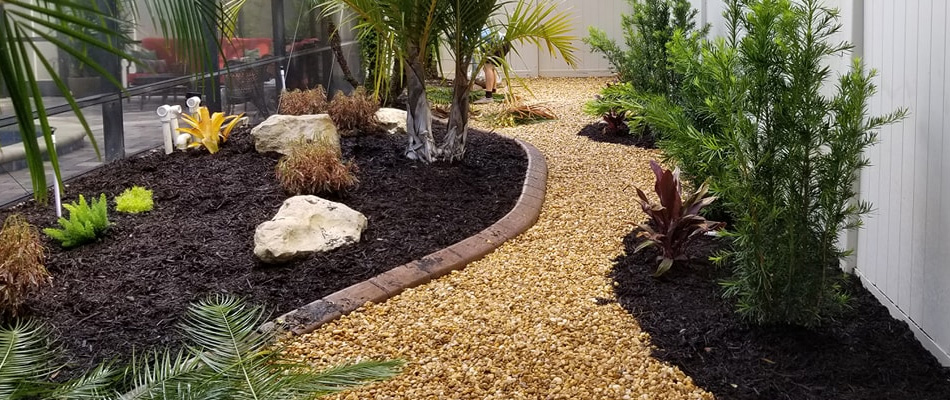All About Hilton Head Landscapes
All About Hilton Head Landscapes
Blog Article
Hilton Head Landscapes Things To Know Before You Get This
Table of ContentsThe 2-Minute Rule for Hilton Head Landscapes5 Easy Facts About Hilton Head Landscapes DescribedThe Facts About Hilton Head Landscapes RevealedHilton Head Landscapes Fundamentals ExplainedNot known Facts About Hilton Head LandscapesThe 9-Minute Rule for Hilton Head LandscapesHilton Head Landscapes - Truths
Line produces all forms and patterns and can be utilized in a selection of means in the landscape. Line in the landscape is developed by the edge in between 2 materials, the overview or shape of a type, or a long straight function. Lines are an effective tool for the designer due to the fact that they can be utilized to create an infinite range of forms and types, and they regulate movement of the eye and the body.

Lines in the landscape. The residential properties of lines identify just how individuals respond to the landscape, both mentally and literally.
Things about Hilton Head Landscapes
Straight lines are usually found in hardscape edges and product. Curved lines create an informal, natural, loosened up character that is connected a lot more with nature and unbalanced balance. Rounded lines move the eye at a slower speed and include enigma to the room by creating covert views. Vertical lines move the eye up, making a room feel larger.
Vertical lines in the landscape include tall, slim plant material, such as trees, or high structures, such as an arbor or a bird home on a pole. Horizontal lines move the eye along the ground plane and can make an area really feel larger. Reduced lines are more restrained and produce a feeling of remainder or repose.
The Only Guide to Hilton Head Landscapes
Low lines are created by reduced garden wall surfaces, pathways, and brief hedges. Lines are made use of to draw forms on a strategy. In plan sight, they define plant beds and hardscape locations. Lines are also developed by the vertical forms of constructed functions and plant material. There are 3 primary line types that create type in the landscape: bedlines, hardscape lines, and plant lines.
Bedlines link plant material to your home and hardscape due to the fact that the eye follows the line, relocating the stare via the landscape. Hardscape lines are created by the side of the hardscape, which marks the developed framework. Line can also be produced by lengthy and narrow materials, such as a fencing or wall surface.
See This Report about Hilton Head Landscapes
Kind is located in both hardscape and plants, and it is usually the dominant visual element that spatially organizes the landscape and usually determines the design of the yard. The kind of structures, plant beds, and garden accessories also establishes the overall kind theme of the garden. Formal, geometric forms include circles, squares, and polygons.
Plants develop kind in the garden with their details or silhouettes, yet kind can additionally be specified by a void or unfavorable space in between plants - landscaping hilton head sc (https://filesharingtalk.com/members/598268-h1tnhdlndscps). Circles can be cycles, or they can be split into half circles or circle sections and integrated with lines to produce arcs and tangents
The Hilton Head Landscapes Ideas
Circles can also be extended into ovals and ellipses for even more variety and interest. Circles are a solid layout type due to the fact that the eye is always attracted to the center, which view can be utilized to emphasize a prime focus or connect various other forms. Number 2. Round kinds in hardscape and lawn panels.
The square kind can additionally be segmented and pre-owned repeatedly to produce a grid pattern. Unlike circles, squares are stronger on the sides, which can be aligned or overlapped to create distinct patterns and even more complex kinds. Polygons are many-sided kinds with straight sides. Triangles, for instance, are three-sided polygons.
Twisting lines typically mimic the all-natural training course of rivers or streams and can be referred to as smooth lines with deeply rounded undulations. Meandering lines (Figure 3) function well for paths, plant bedlines, and completely dry stream beds. Twisting lines can include interest and mystery to a yard by leading customers around edges to uncover new sights and areas.
Facts About Hilton Head Landscapes Revealed

Figure 5. Fragmented edges: tipping rocks in path. Type is one of the most long-lasting high quality of a plant (bluffton landscaping). https://on.soundcloud.com/9G2jvdoH5UDcTrYM8. Common plant kinds are well established and standardized, as form is the most constant and recognizable characteristic of plants. Form can additionally be produced through the massing of plants, where the overall mass develops a different form than a specific plant.
A highly contrasting type should be used with careone or two job well as a focal point, yet way too many develop mayhem. All-natural plant types, as opposed to over-trimmed forms, need to establish the mass of the structure. The relevance of general form is essentially based on the checking out perspectivethe form of a tree can appear quite different to an individual standing under the cover versus checking out the tree from a range in an open area.
How Hilton Head Landscapes can Save You Time, Stress, and Money.
Plant forms additionally produce and specify deep space or open areas in between the plants, developing either convex or concave types in deep spaces. High-arching tree branches typically create a concave open space under the branches, and a round cover with low branches fills the area to develop a convex form in the open space under the tree.

Report this page